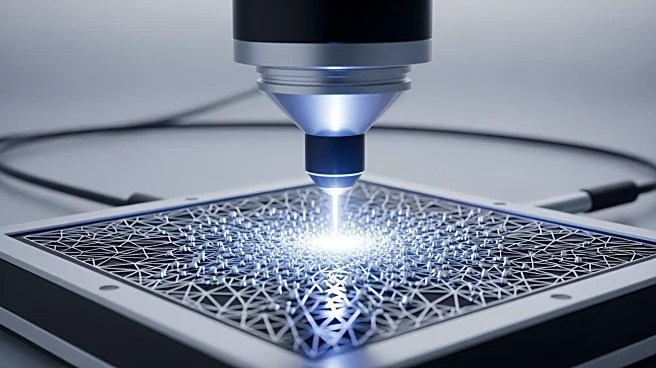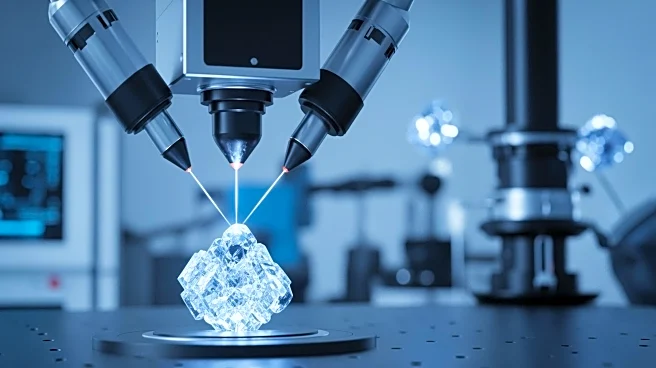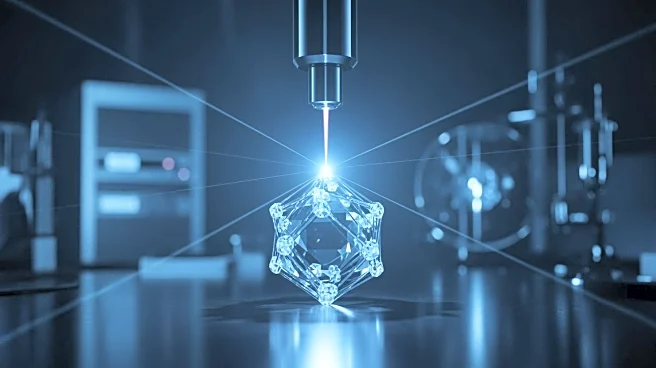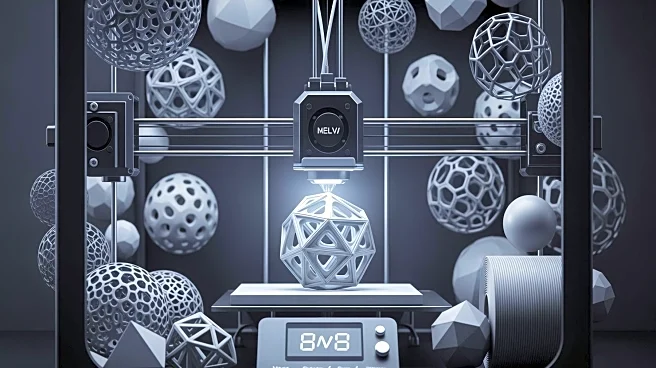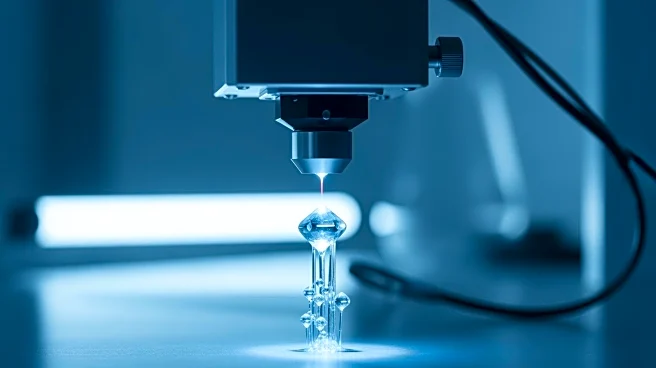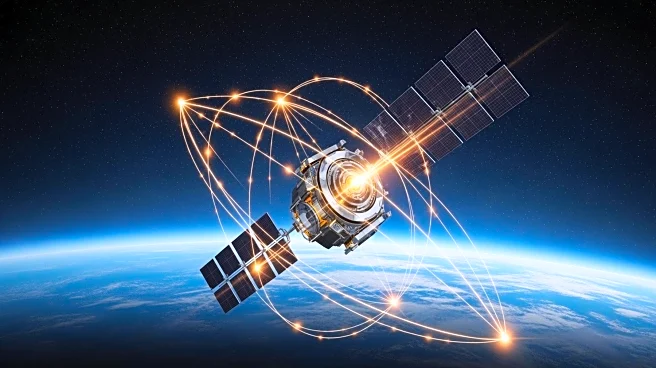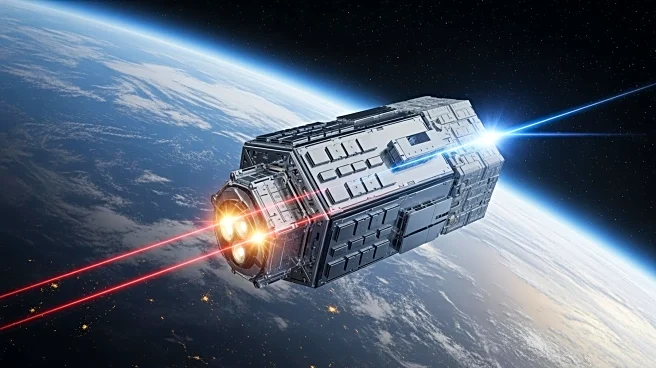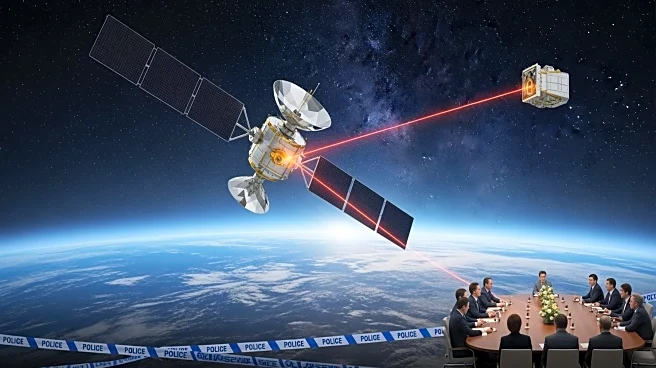What's Happening?
Researchers at Michigan State University have developed a method to draw with crystals using lasers, potentially revolutionizing the production of microelectronics. This technique involves using a coherent
radiation beam to melt gold nanoparticles and transfer them to a desired location, where they crystallize upon cooling. The process is similar to methods used in solar panel creation, offering a more precise way to produce thin layers of crystals essential for modern electronics. While practical applications are still in the early stages, this innovation could lead to the development of ultra-precise circuits.
Why It's Important?
The ability to draw crystals with precision could significantly impact the electronics industry, particularly in the production of microelectronics. This method promises to enhance the accuracy and efficiency of creating crystal layers, which are crucial for various electronic devices. As the demand for more advanced and reliable electronics grows, this technique could offer a competitive edge in manufacturing, potentially reducing costs and improving product quality. Industries reliant on high-performance electronics, such as space technology, could benefit greatly from these advancements.
What's Next?
Further research and development are needed to explore the full potential of this crystal drawing technique. Scientists will likely focus on refining the process and identifying practical applications in microelectronics and other fields. Collaboration with industry partners could accelerate the commercialization of this technology, leading to new products and innovations. As the technique matures, it may become a standard in electronic manufacturing, influencing future designs and capabilities.
Beyond the Headlines
This development highlights the ongoing trend of integrating advanced materials and techniques into electronics manufacturing. The use of lasers and nanoparticles in creating precise crystal structures reflects a broader shift towards more sophisticated production methods. As technology continues to evolve, such innovations may pave the way for new electronic devices with enhanced functionalities and performance.


